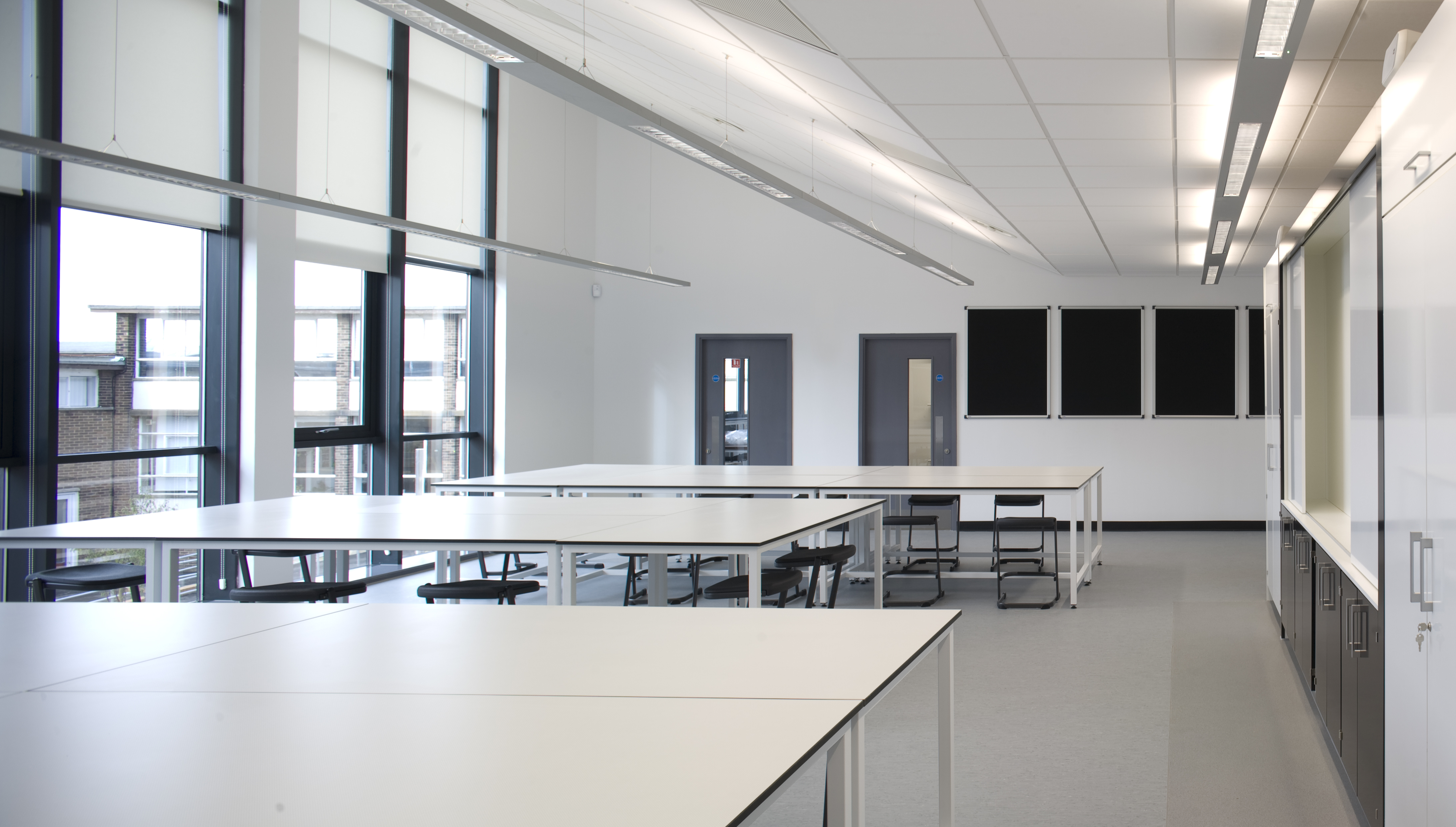How can design help minimise Student Stress in the Classroom?
When left untreated, stress can be extremely damaging to a student’s academic performance – as well as their social and personal life. Elevated cortisol levels means the body has to work harder to regulate stress hormones, making it very difficult for pupils to concentrate on learning.
Given the detrimental impact anxiety can have on student performance, we ask: how can classroom design help minimise student stress? Below, we’ve highlighted several areas in which clever classroom design could help to reduce stress and anxiety among students.
Clutter Means Stress
If a student is hyper-aroused in the classroom due to the stresses of schoolwork or social pressure, their environment can have a dramatic influence on how well they’re able to recover and move on from a stressful situation.
Visual stimulation in the form of clutter can have a detrimental impact on students in the classroom. Distractions like bright colours, piles of material and busy noticeboards, over-stimulates pupils – making it difficult to concentrate and thus causing a rise in cortisol and eventually, stress.
To create the perfect backdrop for calm, effective learning – avoid over-cluttering the classroom with brightly coloured displays, and store all material out of sight until it is needed. Although it’s perfectly fine to display student work on the walls, try to limit the amount affixed to noticeboards at a given time.

Offer a Flexible & Functional Work Space
Whilst sitting and concentrating for long periods of time, students can become restless, fidgety and weary – traits linked to higher than normal levels of cortisol. If a pupil is unable to concentrate for a set period when they feel they should be, anxiety can quickly develop, further reducing the ability to learn and engage with the topic at hand.
By offering a flexible and functional workspace, students are more likely to remain focussed during lessons. A flexible desk setup that accommodates both collaborative and individual study is ideal for most subjects, as it gives both extroverted and introverted pupils a platform on which to learn at a level they’re happy with– helping to reduce stress and create a comfortable learning environment for all students.
Create Space
Flexible, usable space is essential for reducing stress and anxiety in the classroom. When confined to a small space, students can feel trapped, cramped and imprisoned – causing a rapid increase in stress and anxiety.
Filling a classroom with desks and leaving little room for any other movement or activity will harbour stress, making students feel constricted and uncomfortable. If it’s possible to do so, consider reducing class sizes to accommodate a smaller group with more space for circulation and access.
Alternatively – if class sizes are fixed – install desks that offer maximum surface space without massively reducing floor area. At Innova, we offer a broad range of flexible desk layouts that are tailored to the size and shape of a particular classroom; helping to create usable space for a broader range of activities, whilst allowing seamless access.

Reduce Peripheral Noise
In a recent study into student engagement conducted by the University of Salford, peripheral noise and room acoustics were found to be one of the primary factors affecting the way students learn in the classroom.
Extraneous noise from sources beyond the classroom was found to have a considerable impact on concentration levels, resulting in an increase in stress and anxiety among some students. Disorganised noise can make it difficult for pupils to focus on the topic at hand, so it’s important to reduce peripheral noise as effectively as you can.
Removing reverberative hard surfaces, implementing effective soundproofing, and closing windows and doors could help to decrease distracting noises in the classroom and promote a sense of quiet calm among pupils.

Consider Lighting
Studies show inadequate, poor quality lighting affects 20% of students in the classroom – leading to a drop in concentration, mood swings and overstimulation. Indeed, fluorescent lighting – which is often used in schools – is linked to hyperactivity, eye strain, migraines and sleep problems, all of which can lead to stress, anxiety and ill-health in young people.
To ensure classroom lighting promotes a healthy and stress-free learning environment, aim for high levels of natural light from windows, or use high-quality halogen bulbs to mimic daylight. If implemented properly, lighting can significantly reduce and anxiety and stress in the classroom – and can even boost test scores in some subjects.


